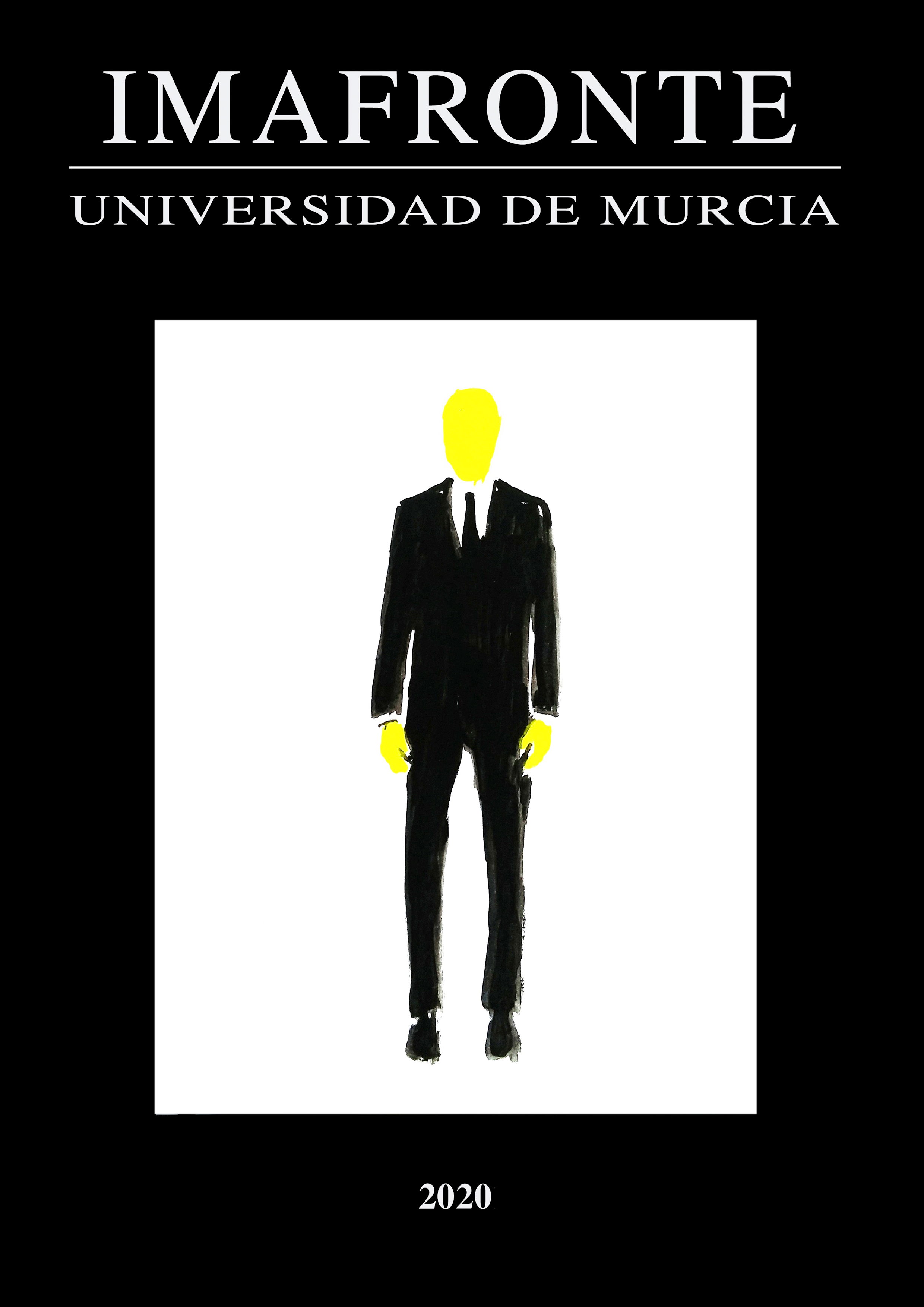La propaganda comercial como transmisora de elementos identitarios: Algunos ejemplos de la ephemera murciana a principios del siglo XX
Resumen
Uno de los apartados menos tratados de las representaciones visuales de Murcia ha sido el de la ephemera comercial. Por tal motivo, dado su uso limitado y efímero, en muchas ocasiones no se le ha considerado como un apartado estimable en la historia del arte. Pero lo cierto es que las etiquetas de fábricas de conservas, frutas, licores y otros establecimientos, desde los últimos años del siglo XIX y la primera mitad del XX, en base al diseño difundieron los elementos identitarios más significativos de este territorio por toda España y el resto del mundo. En la mayoría de casos, la marca publicitaria estaba basada en estampas e imágenes del Costumbrismo romántico murciano que ya se habían consolidado durante el ochocientos para la demanda social de esa corriente; en otros casos se fueron adaptando a los nuevos criterios estéticos del siglo XX. Finalmente, esta forma de publicitar cada producto ayudó a patentar la denominación de origen de diversas empresas de varios sectores, principalmente agroalimentarias, y al mismo tiempo a su asimilación con esta región levantina gracias a sus hitos arquitectónicos, la huerta o sus tipos populares. Esta última premisa es la que abordaremos dentro de este estudio al contrastarlas con otras representaciones anteriores.
Descargas
-
Resumen506
-
PDF445
-
EPUB40
Citas
Cánovas Belchí, J. (2016). Murcia en el imaginario fílmico francés: Adaptaciones cinematográficas de María del Carmen (Felíu y Codina, 1896) en la industria gala: Aux Jardins de Murcie (1923 y 1936). En El Greco en su IV Centenario: patrimonio hispánico y diálogo intercultural, 303-324.
Cos-Gayón, F. (1863). Crónica del viaje de sus Majestades y Altezas Reales a Andalucía y Murcia en septiembre y octubre de 1862. Madrid: Imprenta Nacional.
Álvaro Hernández Vicente, A. (2018). Don Diego Saavedra Fajardo: actos y festejos en la ciudad de Murcia por el tercer centenario de su nacimiento. En Yngenio et arte: elogio, fama y fortuna de la memoria del artista, 376-395.
Martínez Carrión, J.M. (1999). Agricultores e industriales en el negocio del pimentón, 1830-1935. Revista de Historia Económica, 1, 149-186.
Martínez Carrión, J.M. (2002). Economía de la Región de Murcia. Murcia: Consejería de Educación y Cultura de la Comunidad Autónoma de Murcia.
Ortiz García, C. (2012). Folclore, tipismo y política. Los trajes regionales de la Sección Femenina de la Falange. Gaceta de antropología, 28, s.p.
Páez Burruezo, M. (2012). Un ciclo pictórico regional. Murcia 1800-1930. Murcia: Pictografía.
Pérez Picazo, M. T. (1980). Historia. En Historia de la Región de Murcia. Murcia: Ediciones Mediterráneo, 1-179.
Ramos Frendo, E. M. (2008). Iconos del mundo clásico en la publicidad de las revistas ilustradas españolas (1915-1935). Imafronte, 19-20, 325-338.
Ramos Pérez, R. (2002). Ephemera: la vida sobre el papel. Introducción. En Centro Virtual Cervantes: https://cvc.cervantes.es/artes/muvap/sala4b/introduccion.htm
Ramos Pérez, R. (2011). El arte de la belleza. Madrid: Biblioteca Nacional de España.
Derechos de autor 2020 José Miguel López Castillo

Esta obra está bajo una licencia internacional Creative Commons Atribución-CompartirIgual 4.0.
Las obras que se publican en esta revista están sujetas a los siguientes términos:
1. Los autores ceden de forma no exclusiva a la revista los derechos de explotación (reproducción, distribución, comunicación y transformación).
2. Las obras que se publican en esta revista están sujetas a la licencia Attribution-ShareAlike 4.0 International (CC By SA 4.0). Por lo que se pueden copiar, usar, difundir, transmitir y exponer públicamente, siempre que:
i) se cite la autoría y la fuente original de su publicación (revista, editorial y URL de la obra), permitiendo así su reconocimiento.
ii) se permite remezclar, transfromar o crear a partir del material mientras se mantenga la misma licencia del original.
3. Condiciones de auto-archivo. Se permite y se anima a los autores a difundir electrónicamente las versiones pre-print (versión antes de ser evaluada) y/o post-print (versión evaluada y aceptada para su publicación) de sus obras antes de su publicación, ya que favorece su circulación y difusión más temprana y con ello un posible aumento en su citación y alcance entre la comunidad académica. Color RoMEO: verde.
























